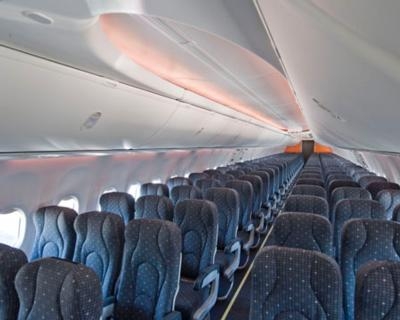Cites Health And Safety Issues Associated With Smaller Seats, Less Legroom
Airline passenger organization FlyersRights.org has appealed the US FAA denial of its rulemaking petition to halt further shrinkage of airline seats and legroom until minimum passenger space standards can be set. The appeal was filed in the US Court of Appeals for the District of Columbia which has the power to review federal agency decisions.

Paul Hudson, the group's president and longtime member of the FAA Aviation Rulemaking Advisory Committee stated: "For years the incredible shrinking airline seat has been one of the top complaints of airline passengers. Airlines have aggressively shrunk seat size and passenger leg room to the point that the average man's shoulders are wider than an economy seat. Persons over 240 lbs or 6 feet 2 inches tall must now encroach on their neighbor's space or the aisle. These overcrowded conditions have become intolerable. They are not only torturously uncomfortable but pose health and safety risks, including life threatening blood clots, impeding emergency evacuation, and sparking passenger discord."
FlyersRights.org called on the FAA and Congress in 2015 to set minimum seat standards so 90% of passengers can fit without any additional charges. And for the 10% of passengers whose size makes economy standard seats impractical, airlines would be required to provide larger seats for a reasonable and proportional additional charge.
However, until the minimum seat standards can be set, a moratorium on further seat shrinkage is necessary. Without regulation, airlines have and will continue to aggressively reduce economy seat size. Some may reduce passenger space until most passengers above average size will be forced to pay extra, simply not fly safely.
Airbus recently unveiled a bench seat that would have four passengers across instead of the current three. Others are proposing bar stool or bicycle style seats, overhead seating, stand up seating and further shrinkage of the number of bathrooms and their sizes. Airlines are also shrinking seat padding, eliminating or reducing seat recline, virtually eliminating tray tables, and narrowing aisles.
Shrunken seats and passenger space has been found to contribute to blood clots and passenger disturbances. The smaller seats and legroom have never been realistically tested to determine if they meet the FAA's longstanding emergency evacuation rule. This rule requires that all passengers in a fully loaded plane with half the exits disabled in low light conditions be able to exit the aircraft within 90 seconds.
Regulations currently protect prisoners, animals and the disabled from inhumane conditions in air transportation, but not regular passengers.

Nearly everyone remembers the Titanic disaster of 1912 where 1,200 perished due to unsafe overcrowded conditions. But apparently the FAA has forgotten.
Despite overwhelming public support to set minimum seat standards, the FAA, citing cost, other priorities, and lack of imminent safety threat, denied the petition.
Congress last bestirred itself to protect passengers from overcrowded conditions on ships nearly 200 years ago. The Manifest of Immigrants Act of 1819 set a limit of two passengers per over five tons of ship burden, at least 60 gallons of water and 100 pounds of bread and salted provisions and one gallon of vinegar for every passenger. This law was updated in 1855 with more stringent conditions, but never further updated.
See Regulations.gov Flyersrights.org Petition for Rulemaking: Limitation Of Seat Size Reduction FAA-2015-4011. The court case is Flyers Rights Education Fund, Inc. et al. v. Federal Aviation Administration, et al., Case No. 16-1101.
In Congress, Senators Richard Blumenthal and Charles Schumer and Congressman Steve Cohen and several others have introduced legislation (HR 4490) demanding the Federal Aviation Administration regulate seat sizes and leg room on commercial airlines. However, the Senate and House in close votes have so far rejected these proposals.
Source: Flyers Rights news release, Image from file)
 NTSB Prelim: Piper PA-23
NTSB Prelim: Piper PA-23 ANN FAQ: Submit a News Story!
ANN FAQ: Submit a News Story! Classic Aero-TV: One Mans Vietnam
Classic Aero-TV: One Mans Vietnam ANN's Daily Aero-Linx (07.03.25)
ANN's Daily Aero-Linx (07.03.25) ANN's Daily Aero-Term (07.03.25): High Speed Taxiway
ANN's Daily Aero-Term (07.03.25): High Speed Taxiway




